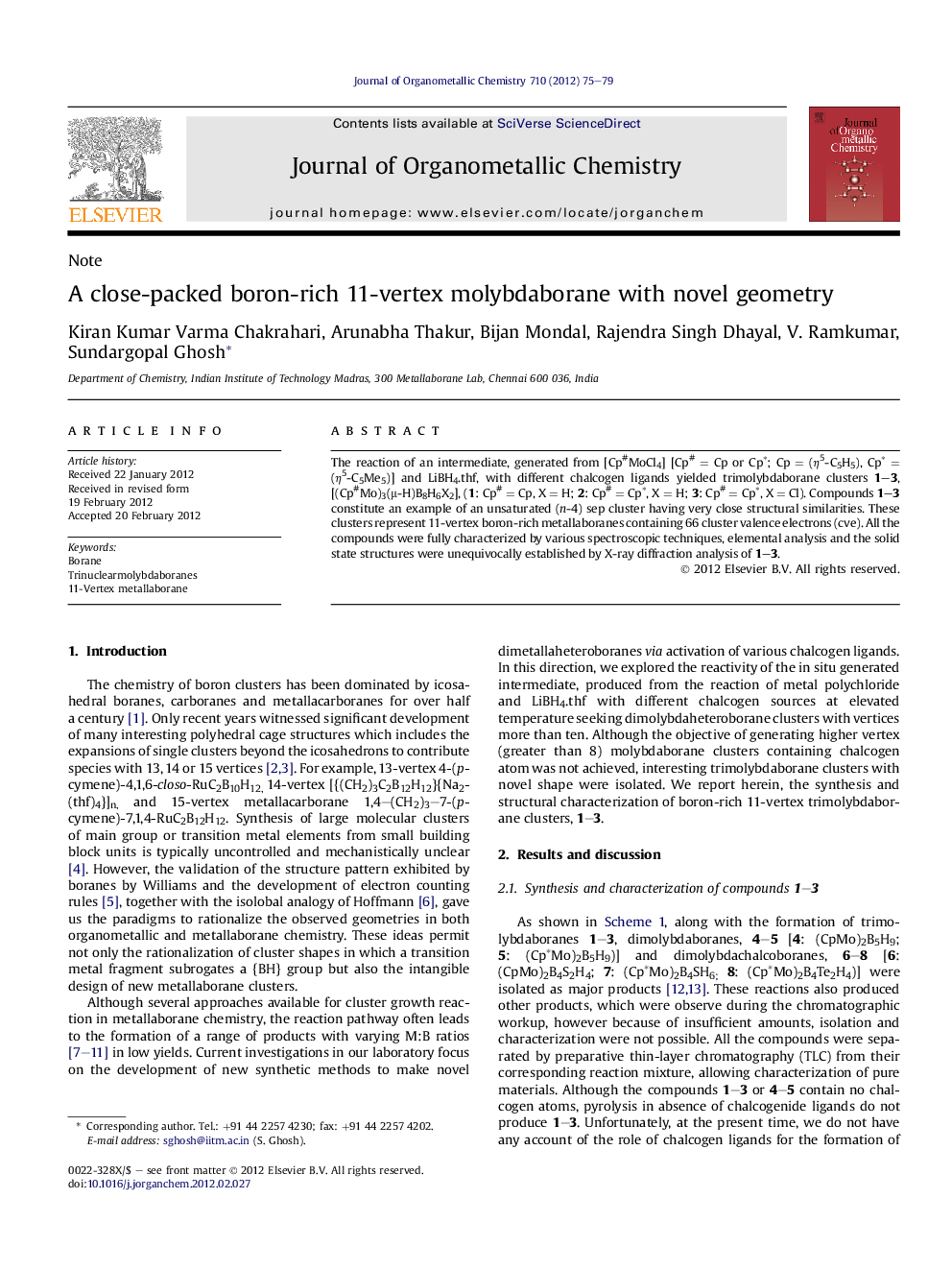| Article ID | Journal | Published Year | Pages | File Type |
|---|---|---|---|---|
| 1326181 | Journal of Organometallic Chemistry | 2012 | 5 Pages |
The reaction of an intermediate, generated from [Cp#MoCl4] [Cp# = Cp or Cp∗; Cp = (η5-C5H5), Cp∗ = (η5-C5Me5)] and LiBH4.thf, with different chalcogen ligands yielded trimolybdaborane clusters 1–3, [(Cp#Mo)3(μ-H)B8H6X2], (1: Cp# = Cp, X = H; 2: Cp# = Cp∗, X = H; 3: Cp# = Cp∗, X = Cl). Compounds 1–3 constitute an example of an unsaturated (n-4) sep cluster having very close structural similarities. These clusters represent 11-vertex boron-rich metallaboranes containing 66 cluster valence electrons (cve). All the compounds were fully characterized by various spectroscopic techniques, elemental analysis and the solid state structures were unequivocally established by X-ray diffraction analysis of 1–3.
Graphical abstractReaction of [Cp#MoCl4] (Cp# = Cp, Cp∗) with excess of LiBH4, followed by thermolysis with different chalcogenide ligands in toluene afforded closo 11-vertex molybdaborane clusters 1–3, [(Cp#Mo)3(μ-H)B8H6X2], (1: Cp# = Cp, X = H; 2: Cp# = Cp∗, X = H; 3: Cp# = Cp∗, X = Cl).Figure optionsDownload full-size imageDownload as PowerPoint slideHighlights► The11-vertex boron-rich metallaborane has been isolated and structurally characterized. ► We observed trimolybdaboranes with low electron count, (n-4) sep. ► The dimolybdaheteroboranes have also been isolated in the reaction.
